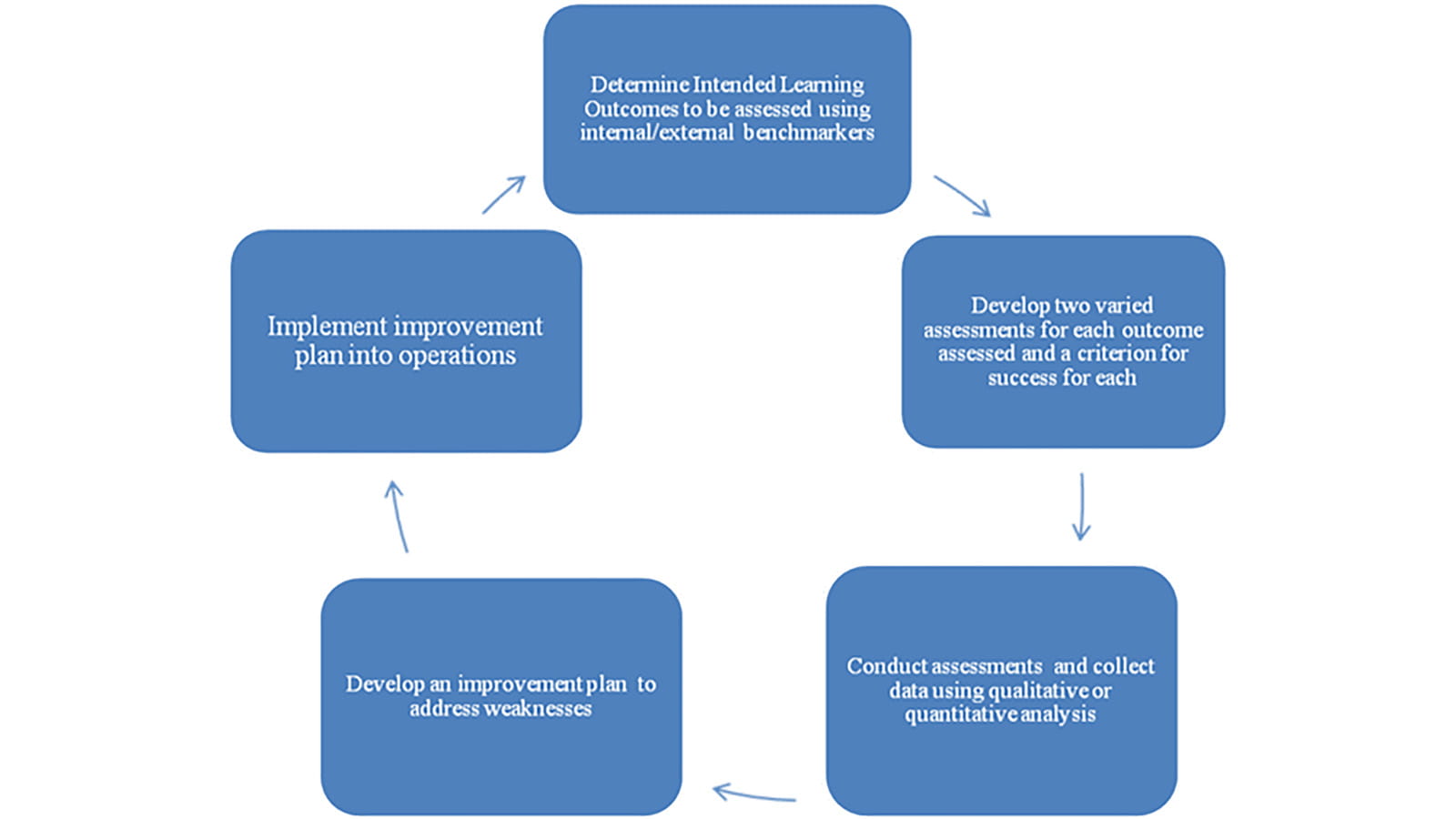About Assessment
Definition of Student Outcomes Assessment
Drexel University defines student outcomes assessment as an on-going process aimed at understanding and improving student learning. By making our expectations for learning explicit, clearly articulating course and program outcomes, and providing purposeful opportunities for students to achieve, we create opportunities to gather, analyze and interpret assessments of student learning. The results of those assessments are used to make informed decisions about the improvement of learning, teaching, planning and resource allocation.
Assessment Loop
The assessment loop is arguably the most difficult step in the process and where things tend to go awry. If the assessment analysis is not compelling, groups frequently are unable to reach consensus on which actions might be indicated by the data. When various constituent groups are unable to even agree on a set of possible actions, no action is taken and the program fails to "close the loop" [see below for illustration]. To be successful at this step, programs, staff and faculty need to present the data to the stakeholders who can take action (department chairs, program coordinators, deans, etc.) in a form that is both detailed and thorough so that a set of actions can be developed as a consensus plan. Sometimes graphical data or data broken down by student characteristics helps define the actions to be taken. Once a set of possible actions is completed, each action can be screened based on priority, cost, time, and other factors in order to create an agreed-upon action (s) to implement.
Actions can be anything from concluding that student performance with respect to a learning goal meets expectations to a major program/curriculum change. Other actions may include increasing admission requirements, remediation, adding prerequisites, increasing or changing specific assignments in existing courses, and providing support structures such as tutoring or help sessions. Another action could be to reevaluate whether the learning goal or expectations for performance on that goal are appropriate.Finally the recommendations need to be implemented and follow up is required to see if the implemented change actually made a difference.
The figure below depicts the steps in developing and implementing an assessment plan. The process is intentionally circular in order to evoke the idea of continual improvement.

- Determine Intended Learning Outcomes to be assessed using internal/external benchmarkers
- Develop two varied assessments for each outcome assessed and a criterion for success for each
- Conduct assessments and collect data using qualitative or quantitative analysis
- Develop an improvement plan to address weaknesses
- Implement improvement plan into operations
Drexel Student Learning Priorities (DSLP)
Students graduating from Drexel University achieve competency in a field of study evidenced by achievement of a set of program-specific learning outcomes. In addition to demonstrating competency in their fields of study, students graduating from Drexel University also will demonstrate meaningful progress in 12 learning priorities:
Six Core Intellectual and Practical Skill Areas
Communication, Creative and Critical Thinking, Ethics, Information Literacy, Self-Directed Learning and Technology Use
Six Experiential and Applied Learning Areas
Global Competence, Leadership, Professional Practice, Research, Scholarship and Creative Expression, Responsible Citizenship and finally Build Your Future,
Achieving levels of competency in each core area appropriate to their field of study, their individual interests and their abilities. Learning in these core areas supports, and is integrated with, learning in the disciplines and provides the foundation for a broad education across disciplines.
Drexel's DSLP's are numbered so as to make the task of mapping and reference easier and more effective when completing various reporting documents. This is a model typically used by colleges and universities when reviewing the institutional strategic plans for example. To illustrate, DSLP #1, Mapping Strategy 1.1, or Strategic Initiative 2.2, etc. makes for an easy and quick reference point for faculty and staff and other constituent groups to use, not in a hierarchical sense, but rather as a source of convenience and clarity.


